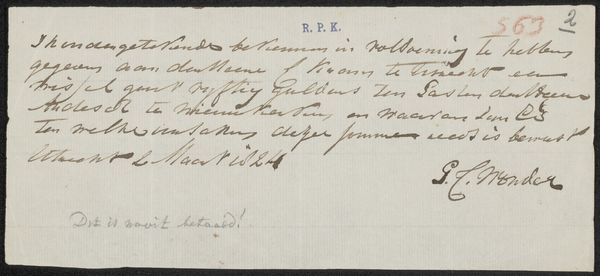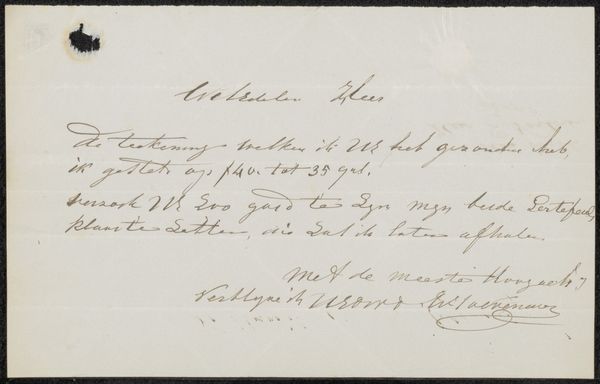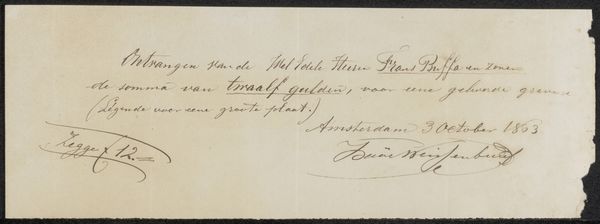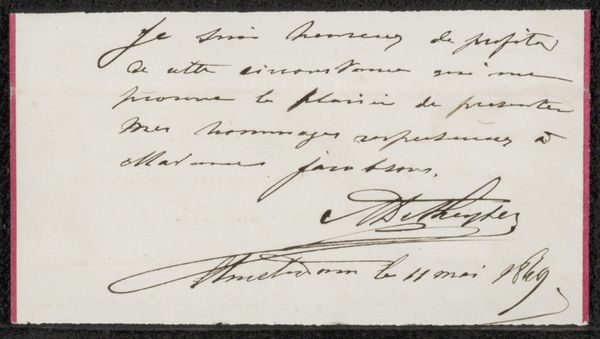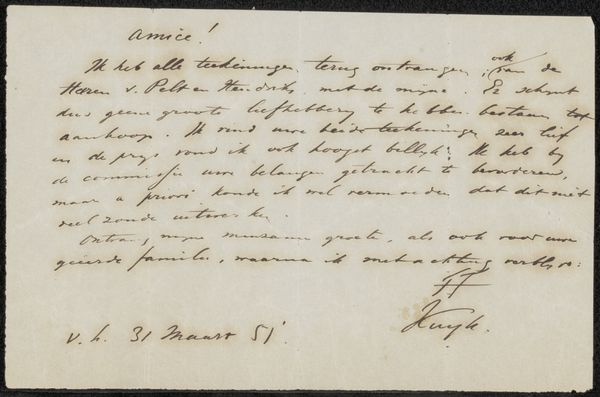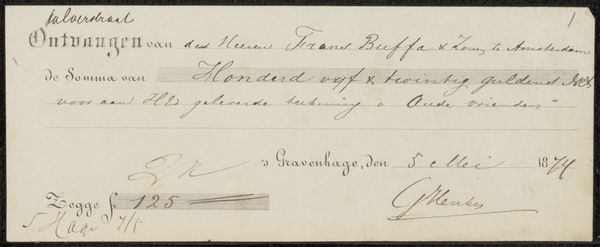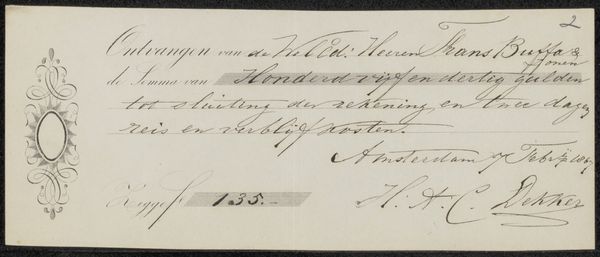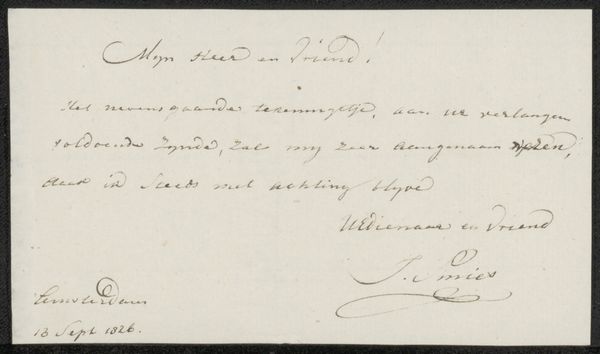
Brief aan de Commissie van de Tentoonstelling van Levende Meesters in Amsterdam Possibly 1810 - 1818
0:00
0:00
jurriaanandriessen
Rijksmuseum
drawing, paper, ink, pen
#
portrait
#
drawing
#
hand drawn type
#
hand lettering
#
paper
#
personal sketchbook
#
ink
#
idea generation sketch
#
hand-drawn typeface
#
ink drawing experimentation
#
romanticism
#
pen-ink sketch
#
ink colored
#
sketchbook drawing
#
pen
#
sketchbook art
#
calligraphy
Copyright: Rijks Museum: Open Domain
This "Brief aan de Commissie van de Tentoonstelling van Levende Meesters in Amsterdam" was written in 1810 by Jurriaan Andriessen. At first glance, it seems like a simple note, but the handwriting itself is a powerful symbol, a kind of visual echo that has resonated across cultures and time. Consider the act of writing – a gesture that has evolved from ancient hieroglyphs to modern script. In Andriessen's time, handwriting was a personal stamp, reflecting character and status, similar to the signatures we see on Renaissance paintings, where the artist's name becomes a part of the artwork itself. The looping letters and elegant flourishes, though practical, contain a deeper, subconscious desire for self-expression and recognition. Think about how handwriting appears in religious texts or royal decrees, lending authority and permanence. This seemingly simple letter then transcends its immediate purpose, linking us to a broader history of human communication, its symbols morphing and adapting across centuries. And so, this letter engages us on a deep, subconscious level, reflecting both the individual and the collective human experience.
Comments
No comments
Be the first to comment and join the conversation on the ultimate creative platform.


